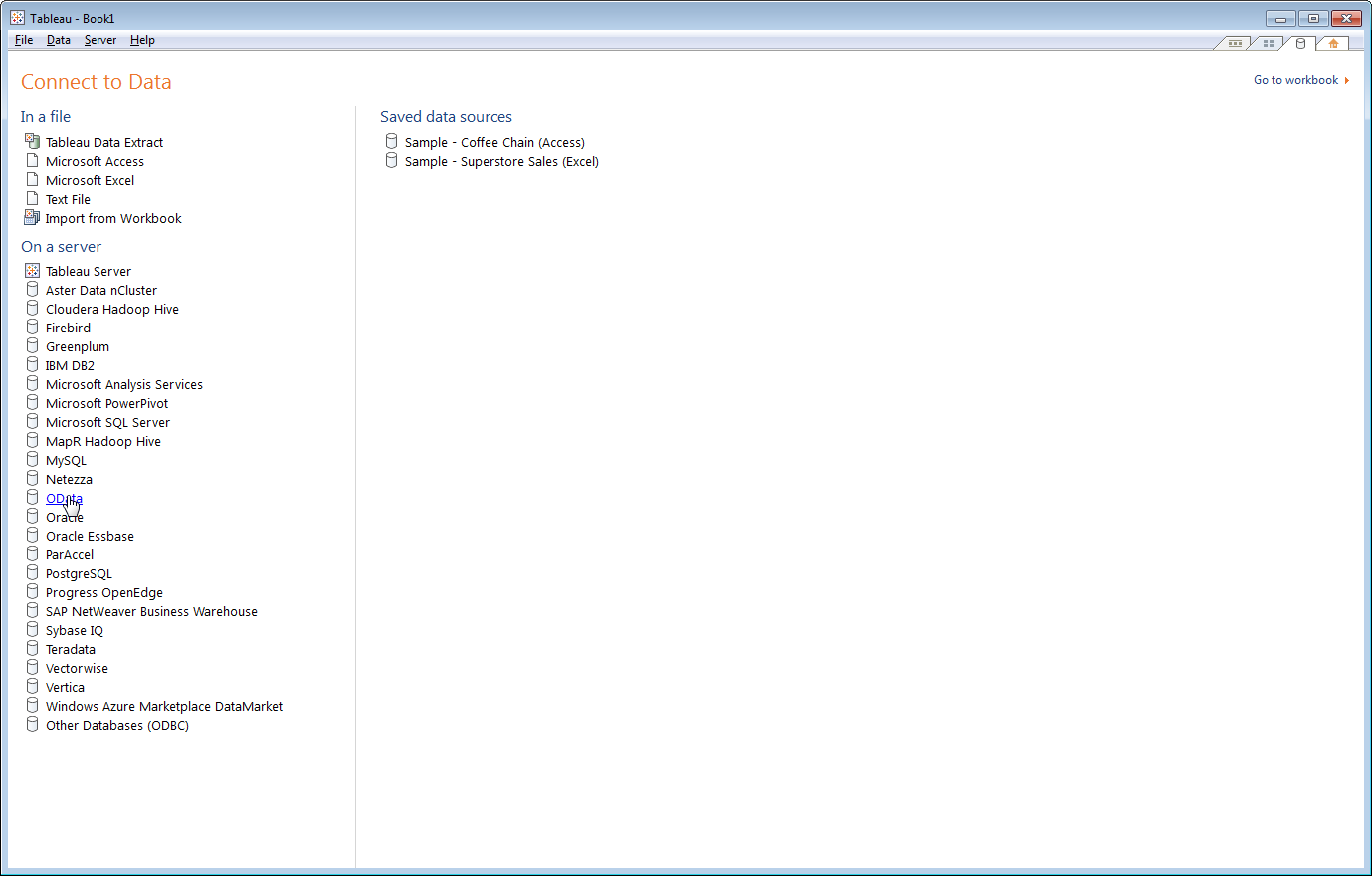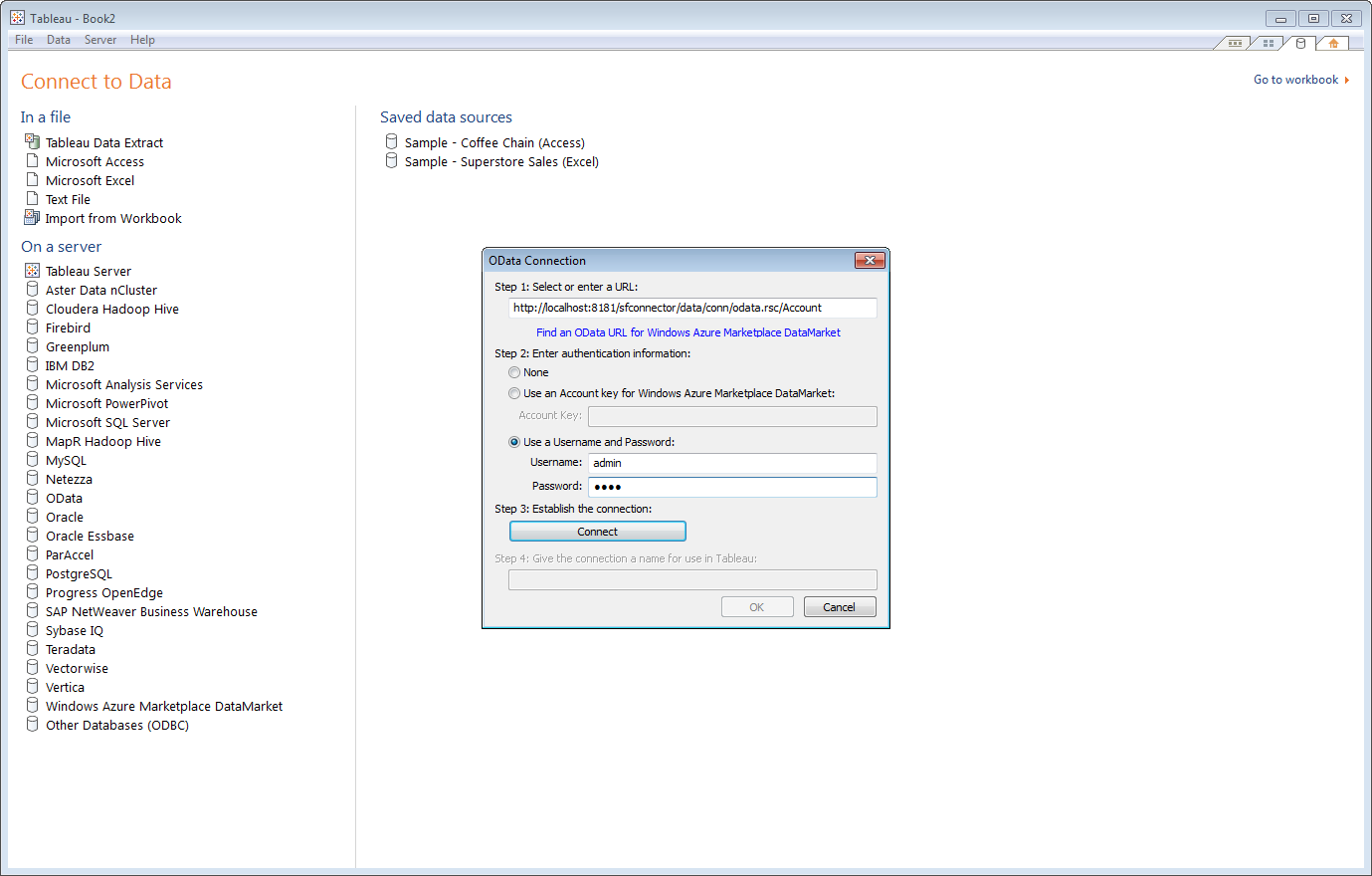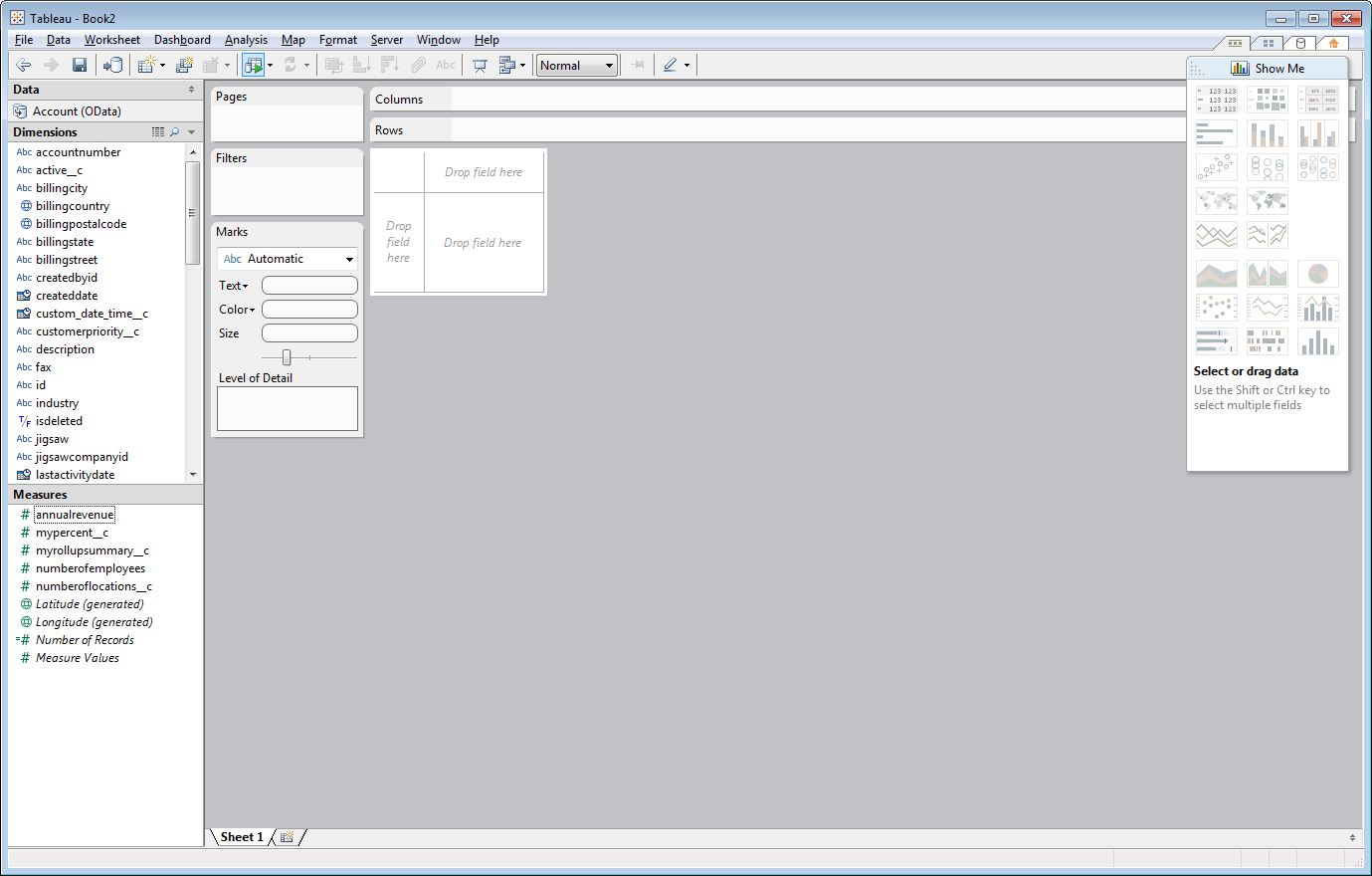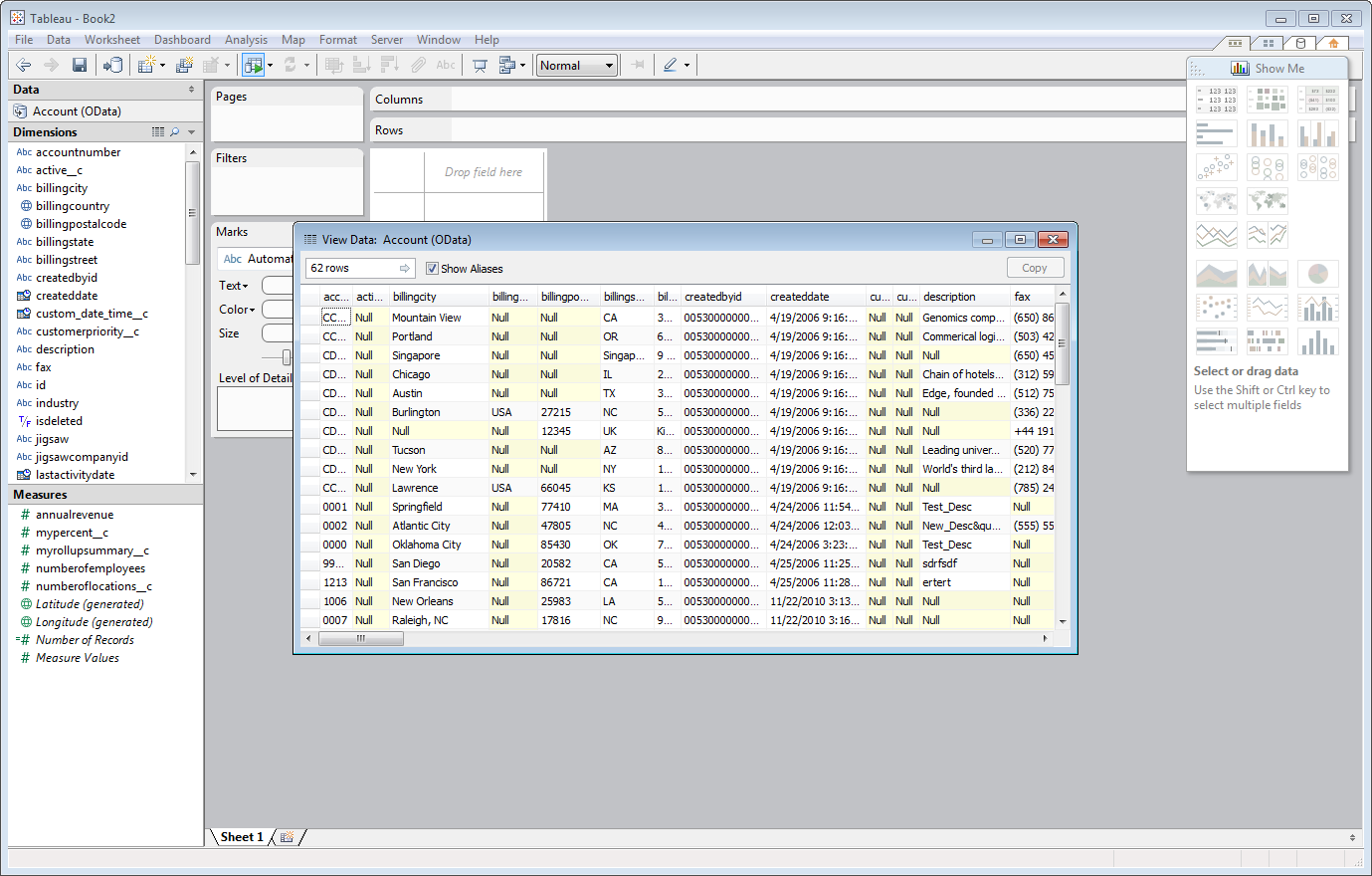Model Context Protocol (MCP) finally gives AI models a way to access the business data needed to make them really useful at work. CData MCP Servers have the depth and performance to make sure AI has access to all of the answers.
Try them now for free →Access QuickBooks Data as OData Feeds in Tableau
Use the Tableau Desktop business intelligence tool to connect to QuickBooks data using the API Server.
The CData API Server, when paired with the ADO.NET Provider for QuickBooks (or any of 200+ other ADO.NET Providers), provides QuickBooks data as OData Web services. This article will explain how to use the API Server to provide the underlying connectivity to QuickBooks data in Tableau's business intelligence tool.
About QuickBooks Data Integration
CData simplifies access and integration of live QuickBooks data. Our customers leverage CData connectivity to:
- Access both local and remote company files.
- Connect across editions and regions: QuickBooks Premier, Professional, Enterprise, and Simple Start edition 2002+, as well as Canada, New Zealand, Australia, and UK editions from 2003+.
- Use SQL stored procedures to perform actions like voiding or clearing transactions, merging lists, searching entities, and more.
Customers regularly integrate their QuickBooks data with preferred tools, like Power BI, Tableau, or Excel, and integrate QuickBooks data into their database or data warehouse.
Getting Started
Set Up the API Server
Follow the steps below to begin producing secure QuickBooks OData services:
Deploy
The API Server runs on your own server. On Windows, you can deploy using the stand-alone server or IIS. On a Java servlet container, drop in the API Server WAR file. See the help documentation for more information and how-tos.
The API Server is also easy to deploy on Microsoft Azure, Amazon EC2, and Heroku.
Connect to QuickBooks
After you deploy the API Server and the ADO.NET Provider for QuickBooks, provide authentication values and other connection properties needed to connect to QuickBooks by clicking Settings -> Connections and adding a new connection in the API Server administration console.
When you are connecting to a local QuickBooks instance, you do not need to set any connection properties.
Requests are made to QuickBooks through the Remote Connector. The Remote Connector runs on the same machine as QuickBooks and accepts connections through a lightweight, embedded Web server. The server supports SSL/TLS, enabling users to connect securely from remote machines.
The first time you connect, authorize the Remote Connector with QuickBooks. See the "Getting Started" chapter of the help documentation for a guide.
When you configure the connection, you may also want to set the Max Rows connection property. This will limit the number of rows returned, which is especially helpful for improving performance when designing reports and visualizations.
You can then choose the QuickBooks entities you want to allow the API Server to access by clicking Settings -> Resources.
Additionally, click Settings -> Server and set the Default Format to XML (Atom) for compatibility with Tableau.
Authorize API Server Users
After determining the OData services you want to produce, authorize users by clicking Settings -> Users. The API Server uses authtoken-based authentication and supports the major authentication schemes. Access can also be restricted based on IP address; by default only connections to the local machine are allowed. You can authenticate as well as encrypt connections with SSL.
Create Real-Time QuickBooks Data Visualizations
Follow the steps below to create data visualizations based on the remote QuickBooks data:
-
In Tableau, select 'Connect to data'. In the 'On a server' section, click OData.

-
In the resulting wizard, enter the URL of the OData endpoint for the API Server. Append the name of the table you want to access to the OData entry URL. For example:
https://your-server/api.rsc/Customers -
Select the
'Use a Username and Password' option and enter the username and password of a user who has access to the API Server.

-
Tableau uses the table metadata exposed by the API Server to detect dimension and measure columns.

-
To view the QuickBooks data, right-click under the table name in the Data section of the dashboard and select the View Data option. The QuickBooks data will appear in Tableau.

